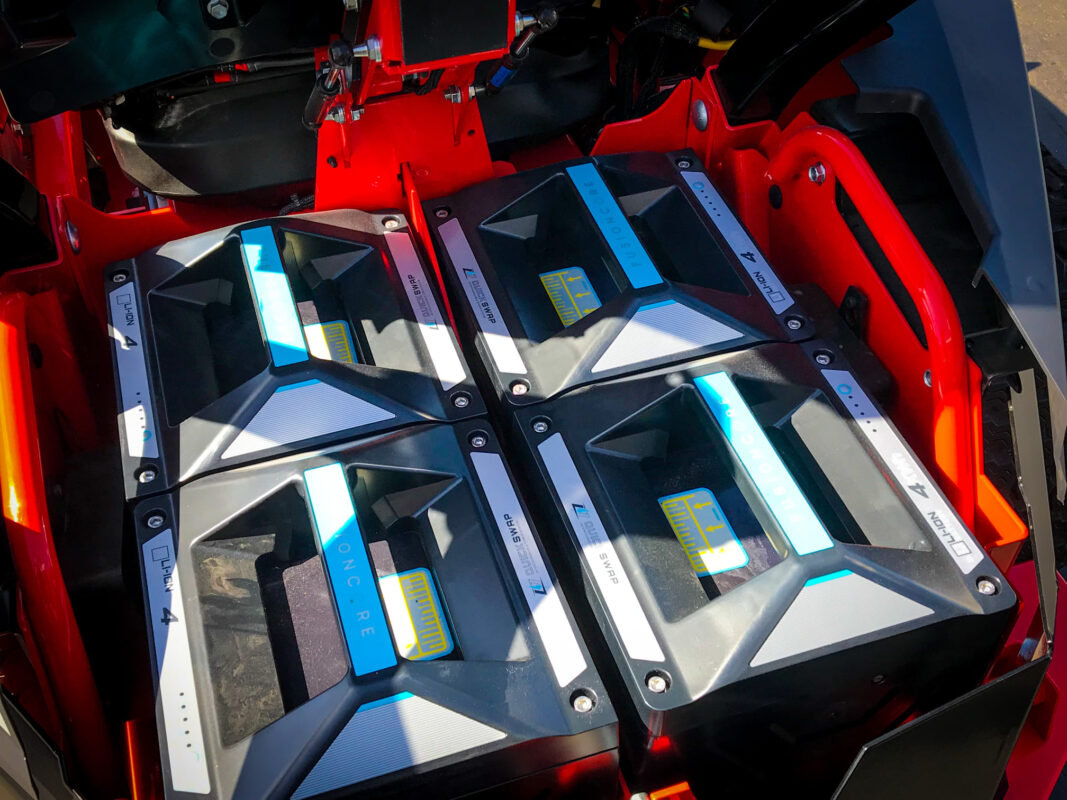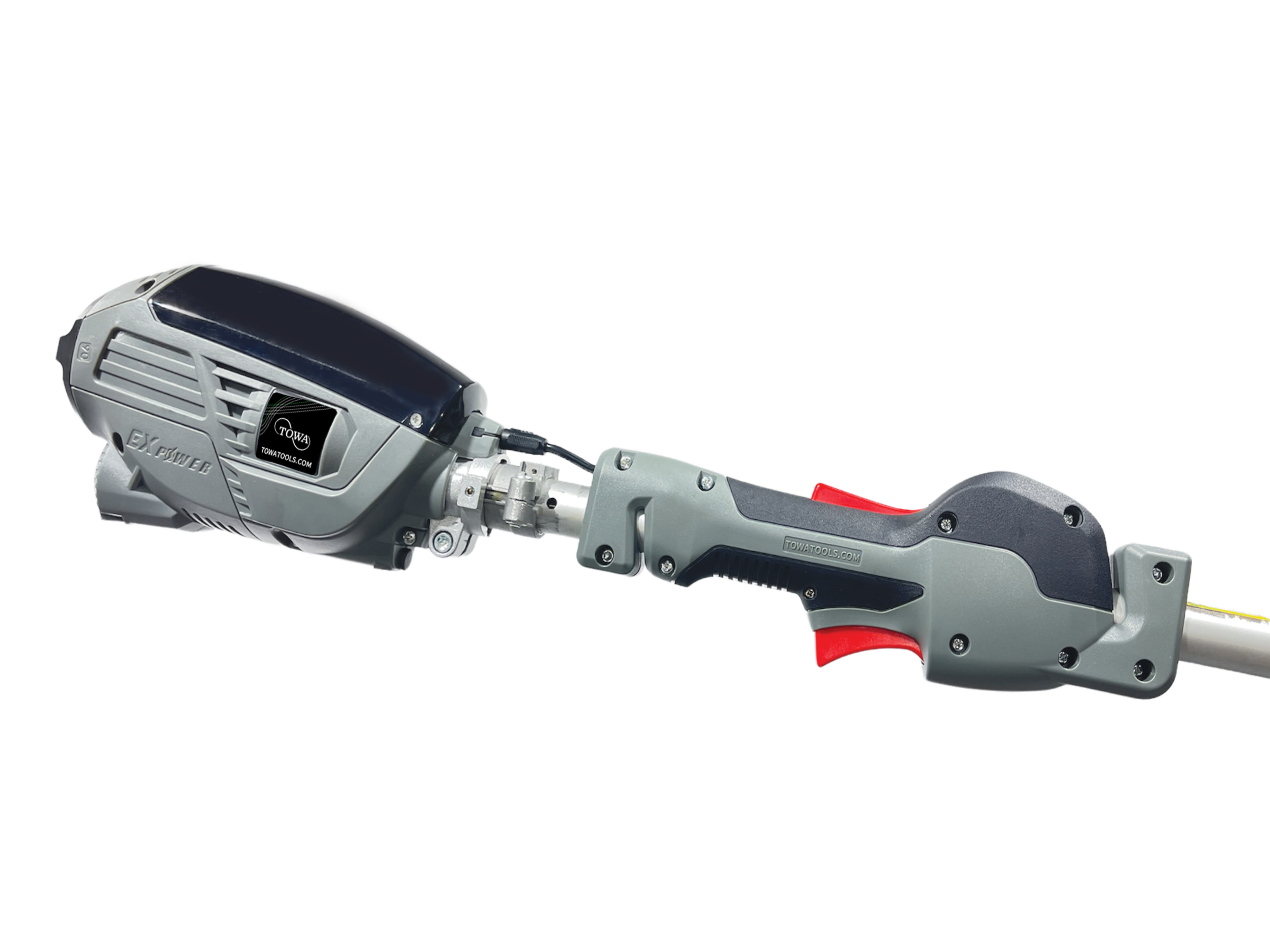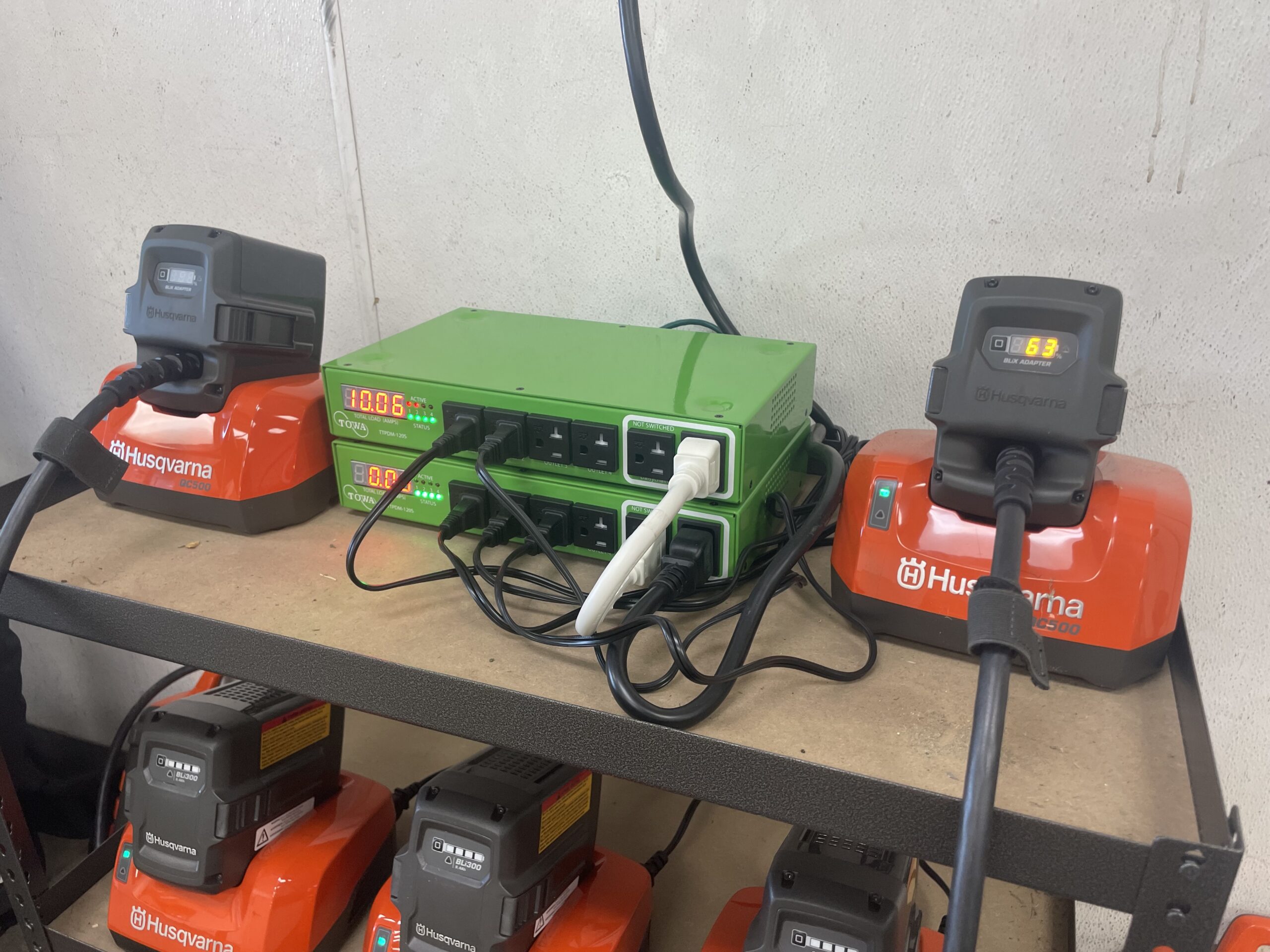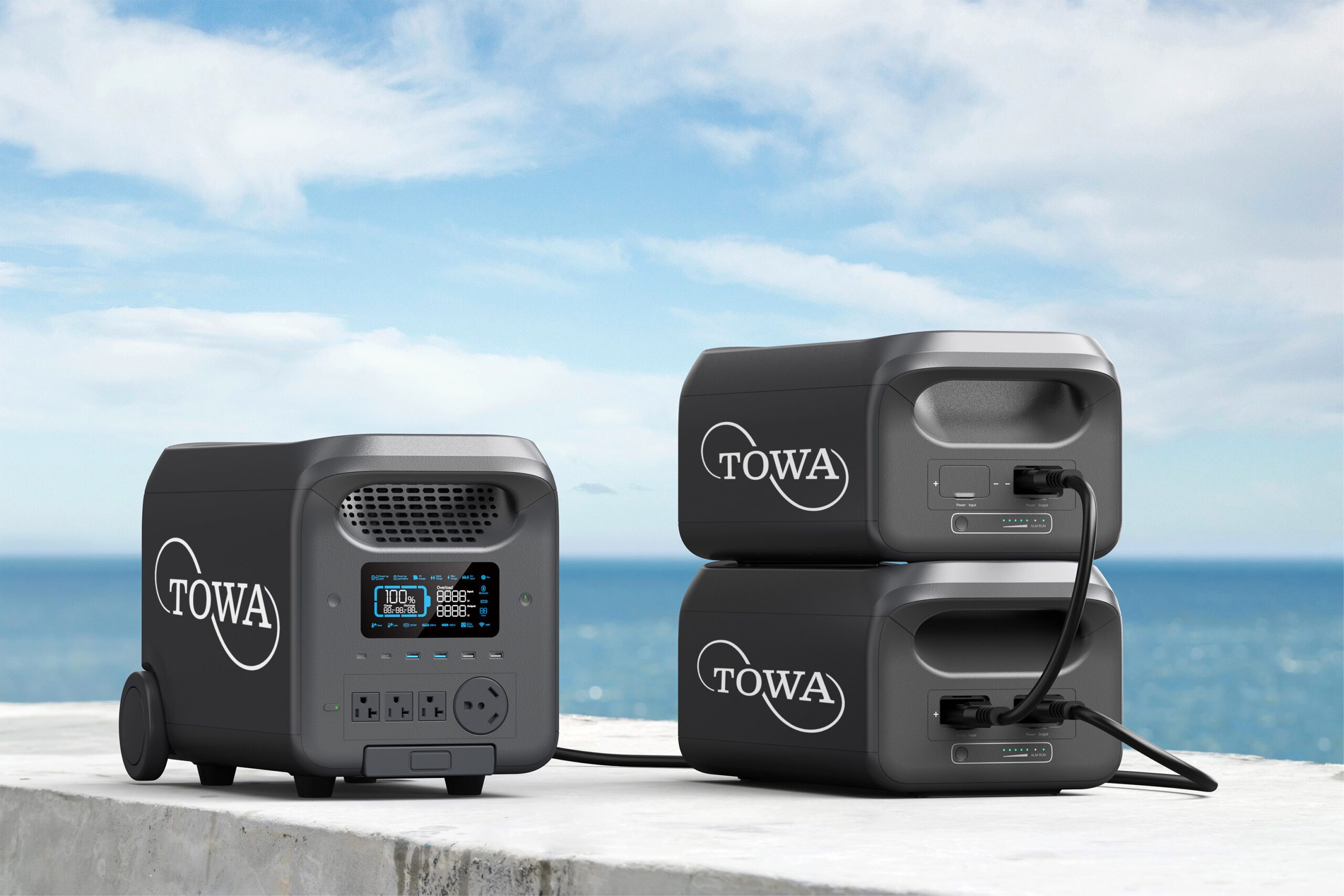
The demand for battery-powered landscape equipment has been fueled by advancements battery technology, equipment performance; customer demand for zero-emission landscape services, and incentive rebates,
The successful deployment of battery-powered tools is dependent on the capability to charge all this equipment every day. Charging battery-powered lawnmowers, leaf blowers, string trimmers and a fleet of commercial equipment will force landscape companies, schools and cities to develop a battery charging strategy.
In 2019, Stanford University converted their entire landscape maintenance team to battery-powered equipment. Over 70 crew members were outfitted with battery-powered tools and all of them needed to charge their batteries every night. This massive demand for electricity blew the circuit breakers in the buildings.
How Much Charging Capacity is Required for Battery-Powered Landscape Equipment?
A single STIHL AR 3000 L backpack battery draws 6.5 Amps of electrical current to charge the 36 volt lithium-ion battery. The Mean Green, Gravely and EGO battery-powered zero-turn lawnmowers draw about 12-16 Amps of electrical charging power.
When a fleet of battery-powered equipment requires more than 20 Amps to reach a full charge, you will either need to add another another dedicated line of electricity in the home or facility, or manually swap charged and uncharged batteries, or use the new TOWA PDM SmartCharger.
The TOWA PDM Will Automatically Distribute Power And Charge All Your Landscape Equipment
The TTPDM120S is the SMARTEST & MOST EFFICIENT battery charging appliance designed for professional landscapers in the Outdoor Power Equipment industry. The PDM will intelligently charges eight batteries without overloading an electrical circuit by detecting amp draw requirements for each battery, then safely distributing power to each battery charger.


